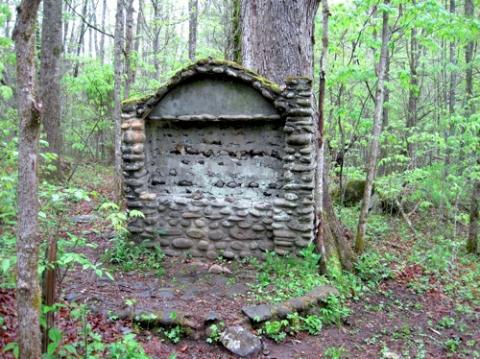When you start looking at the numbers associated with Great Smoky Mountains National Park, the "national park" that boasts the greatest visitation year after year after year, it's easy to get numbed. From the millions of dollars this park receives, and generates in tourism, to the number of visitors each year, Great Smoky is an over-achiever.
With that said, here's a look at Great Smoky "By The Numbers":
* $718 million -- Economic impact of the Smokies for surrounding tourist communities.
* $77.5 million -- Received as stimulus money through the American Recovery and Reinvestment Act - $43,750,000 from Department of Interior - National Park Service, and $33,750,000 from the Department of Transportation - Federal Highway Administration
* $19,363,000 -- Base budget in Fiscal Year 2009
* 9,430,794 -- Number of visitors. The most-visited "national park" in the United States.
* $1,927,142 -- Amount of park support from Great Smoky Mountains Associationin 2009
* $1,045,990 -- Amount of park support from the Friends of the Smokies in 2009
* 521,490.13 -- Acres. Of this total, 276,343.88 acres are in North Carolina and 244,741.78 acres are in Tennessee
* 6,643 -- Park's highest elevation, in feet, at Clingmans Dome.
* 6,582 -- Species known to science, but not known to live in Great Smoky until they were discovered via the ongoing all-taxa biodiversity inventory in the park.
* 907 -- Number of species new to science discovered as a result of the ongoing all-taxa biodiversity inventory.
* 875 -- Park's lowest elevation, in feet, at the mouth of Abrams Creek
* 803 -- Miles of hiking trail - third most miles after Yellowstone and Sequoia/Kings Canyon
* 250 -- Permanent staff, plus another 100 seasonals
* 100+ -- Backcountry campsites and shelters
* 78 -- Historic structures located in five historic districts
* 71.4 -- Miles of the Appalachian Trail in the park from Fontana Dam to Davenport Gap - going north
* 22 -- The number of Civilian Conservation Corps camps. The Smokies had more camps than any other two parks combined.
* 10 -- Developed campgrounds with a total of 1,000 sites
* 2 -- The number of states that the park overlaps - North Carolina and Tennessee
* 1 -- Number of lodges inside the park's boundaries. That would be LeConte Lodge, where you can find a meal and a bed. But first you have to hike at least five miles one-way.




Comments
That looks like the sign board at the former CCC camp on the Old Sugarlands trail instead. The actual plaque was removed years ago and is supposedly stored at the park HQ
Hey, I have a picture just like that on my blog today! Yes it is at the old CCC camp #411 on the Kephart trail. What a beautiful area to visit, so much history. Interesting set of numbers, thanks for sharing.
we saw an old water cistern marked oct 1936, some old fire hydrants, water fountains, old large fireplace hearth, lots of foot bridges, you can still see where they pushed back to earth to make a clearing for the camp,
Visiting the Great Smoky Mountains National Park is a vacation all in its self.